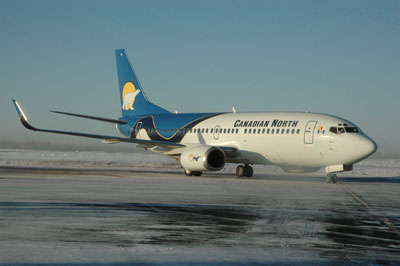
Features
Operations
45º 42′: The northern perspective
As executive director of the Northern Air Transport Association (NATA), Stephen Nourse is well versed in the unique challenges facing commerical operators in northern environs.
January 9, 2012 By Peter Pigott
As executive director of the Northern Air Transport Association (NATA), Stephen Nourse is well versed in the unique challenges facing commerical operators in northern environs.
 |
|
| “Let’s take a look at Air Canada coming into Yellowknife and tell me what they are contributing to the northern economy.” PHOTO: randy straker
|
Sitting down in Ottawa recently, Nourse explained in minute detail how a significant portion of his job is simply reminding people that aviation in Canada isn’t only just along the 49th Parallel and made up of Air Canada, Porter and WestJet – northern carriers have unique challenges lost on the likes of their more southerly contemporaries. “There are many smaller, but very professional, companies providing service in the three territories and the northern parts of the provinces,” he says.
One of the ongoing challenges northern carriers face is a lack of aviation infrastructure. Much of it was put in place in the 1950s to build the DEW Line and what went into various communities was based on the aircraft of the time – the DC-3. As a result, many northern settlements have 2,500-foot or 3,000-foot gravel air strips. Such runways may have been ideal for DC-3s, but today, only Buffalo Airways flies them.
The Canadian Arctic has few paved runways – apart from the territorial capitals, the Yukon, Nunavut and Nunavik have only one each and the Northwest Territories has five. Not only are most of the airports gravel but many are also relatively short, limiting the type and size of aircraft.
“Some of the biggest problems NATA members face [involve] creating a route structure in the region,” Nourse says, “because of the distances involved and the size of the communities. It’s very difficult to put together a scheduled route structure that you would get more than about 1,600 or 1,800 hours out of an aircraft annually. If you go to most communities once a day, you’ve satisfied the need. Flying only 1,600 to 1,800 hours annually, you can’t amortize a new airplane and be cost-competitive.”
The north devolved long before the south in operating its own airports, but as Nourse points out, the combined population of all three territories is 118,000 people. That’s the size of the city of Kingston – and this is spread over a massive area in locations where your construction costs are greater than down south.
“So, you want to put a little more gravel on the runway to extend it?” Nourse asks. “Well, it’s a three-year operation – you’ve got to mobilize the equipment, which is a sealift or ice road operation, then you’ve got to mine the rock and crush it. By the time you put it on and have the equipment out, three years have passed. You can imagine what that costs – whereas down south, you just call up the local contractor and he delivers it.”
Air Canada’s push into the northern market is another hot-button issue for NATA members, Nourse contends. His response is straightforward: “One hates to complain about a free market economy; that is what the current Canadian aviation industry is built on. However, it’s difficult not to see the irony in Air Canada getting extremely worked up and lobbying to keep out Emirates Airlines. All this effort because they’re worried about this competitor who comes in and doesn’t contribute anything to the local economy or community. Let’s take a look at Air Canada coming into Yellowknife and tell me what they are contributing to the northern economy.”
In the end, you either love or hate the north, Nourse contends – some would live nowhere else and for others it’s only a stepping-stone to another destination. “This is why we feel it’s really important to develop the northern labour market, and get them into the industry – people who want to be there for the long term,” he says. “But it’s tough to get them out of the north for educational purposes. Family is extremely important to people in the north.”
Most northern carriers have programs to develop the local labour market, says Nourse. For example, Air North has a huge local base – virtually all of Air North – up to 90 per cent live in the north.
“Its CEO, Joe Sparling, figures they might be the largest private-sector employer in the Yukon,” he says. “While Air Canada flies in and out and employs two ticket agents, Joe has hangars and hundreds of people who all buy stuff at the local store. And yet, he is priced competitively. Both First Air and Canadian North, and other northern carriers, pay very well – the rotational work in the Arctic pays well because you have to attract people.”
Attracting the right people and exposing them to the joy of working north of the 49th Parallel. It’s not without its challenges, but as Stephen Nourse points out, the long-term benefits can be rewarding indeed.